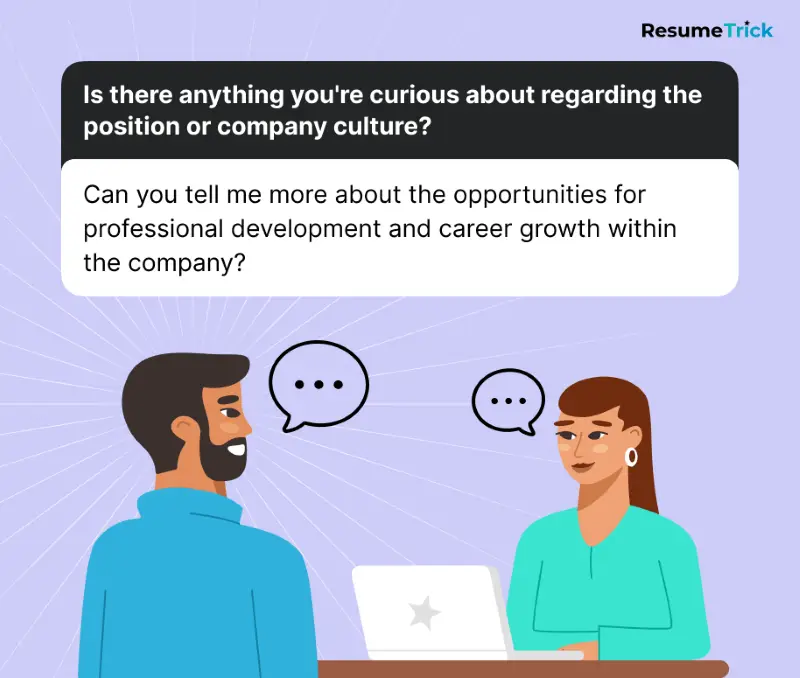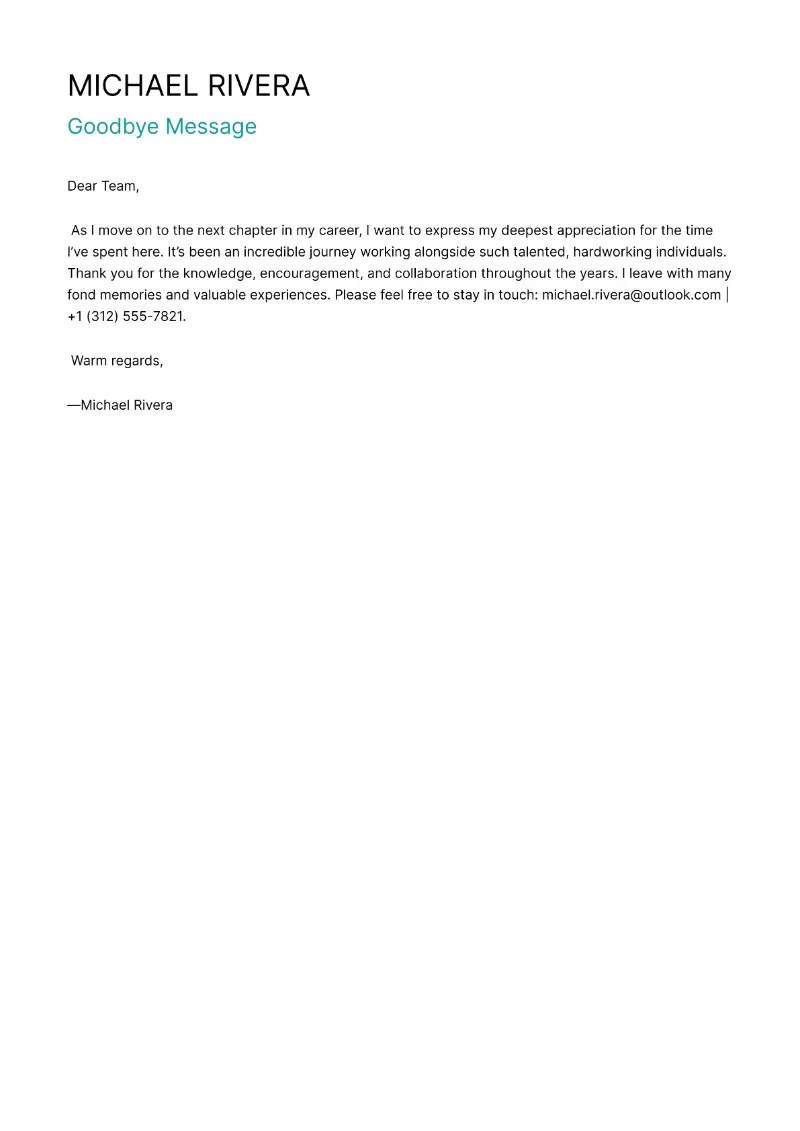Interviews are a two-way street. While you’re there to showcase your skills and expertise, it’s also crucial to assess whether the company aligns with your career goals, values, and work style.
Having the right questions to ask in an interview can help you gauge the company's culture, expectations, and opportunities for growth.
In this article, we'll explore good interview questions to ask potential employer, empowering you to make a well-informed decision about your next career move.

Why do questions for interviewer matter?
One of the most important reasons to ask questions is that it shows your genuine interest in the company and the role. Employers want to hire individuals who are excited about the opportunity, not just someone looking for a paycheck.
Preparing good questions to ask in an interview will send a signal to the employer that you’re not afraid to take initiative and are actively considering what your future with the organization would look like.
Interviews often focus on your qualifications, but they don’t always delve deeply into the day-to-day expectations of the role. By asking specific questions about the responsibilities and goals of the position, you can gain a clearer picture of what will be expected of you.
Understanding the company’s culture in terms of their approach to work-life balance, collaboration, and employee development will help you assess whether you’d be happy and productive in that environment.
Questions to ask an interviewer about professional development opportunities, promotions, and future goals will help you determine if the company is invested in the growth of its employees. This can also give you a sense of whether the role offers a clear path to advancement.
Good interview questions to ask the employer
Here’s the list of questions to ask the interviewer with brief explanations of why each one matters. These clarifications can help you prioritize which questions to ask in an interview based on what’s most important to you.
Company culture
- What values are most important to your organization?
- Understanding core values helps assess if the company’s principles align with your personal beliefs.
Our company prioritizes integrity, teamwork, and innovation as key values that guide all our decisions.
- Can you describe the company culture?
- Learning about the culture provides insight into the work environment and if it's a good fit for you.
We foster a collaborative, open environment where employees are encouraged to share ideas and support each other.
- How does the company support diversity, equity, and inclusion?
- This shows if the organization values creating an inclusive environment for all employees.
We have employee resource groups, regular training sessions on unconscious bias, and actively recruit from diverse talent pools.
- What does work-life balance look like here?
- Helps gauge whether the company prioritizes employees’ well-being or expects excessive overtime.
We offer flexible schedules, remote work options, and emphasize taking regular breaks to maintain a healthy balance.
- How does the company celebrate employee achievements or milestones?
- Reveals how employee contributions are valued and rewarded.
We have monthly recognition ceremonies, peer-nominated awards, and celebrate work anniversaries with special events.
Team dynamics
- Can you tell me more about the team I’ll be working with?
- Understanding the team dynamics can help you visualize your potential day-to-day experience.
The team is made up of diverse professionals who value collaboration, open communication, and continuous learning. We often hold team-building activities to strengthen our bond.
- How do team members typically collaborate—both in-office and remotely?
- Helps determine the communication and collaboration style you’ll need to adapt to.
We use Slack and Microsoft Teams for daily communication, hold weekly video check-ins, and encourage shared project management tools like Asana to stay aligned.
- What is the team’s biggest current challenge?
- Identifies potential obstacles and helps you assess if you can contribute solutions.
Our biggest challenge right now is integrating new software across departments while maintaining productivity and minimizing disruptions.
- How would you describe the management style of the person I would be reporting to?
- Knowing the management style helps you determine if you’ll work well with your supervisor.
The manager leads with a supportive and hands-on approach, focusing on mentorship and empowering team members to take initiative.
- Can you share an example of a recent successful project the team worked on?
- This gives insight into the kind of work you might be doing and what success looks like for the team.
Recently, the team successfully launched a new customer portal that improved user experience and increased engagement by 30%.
Job expectations & responsibilities
- What are the immediate priorities or objectives for this role in the first 6 months?
- Understanding expectations helps you hit the ground running and prioritize your efforts.
Initially, the focus will be on familiarizing yourself with company workflows, establishing relationships with key colleagues, and contributing meaningfully to ongoing initiatives.
- Can you describe a typical day or week in this position?
- Gives you a clear picture of the daily tasks and rhythm of the role, helping you evaluate fit.
Your regular schedule will include coordinating with clients, preparing documentation, attending team discussions, and collaborating on project goals to ensure timely completion.
- What are the most important skills needed to succeed in this role?
- Allows you to align your skills and identify areas where you may need additional development.
Key attributes include excellent communication, strong analytical thinking, meticulous attention to detail, and proficiency with the necessary software. Flexibility and collaboration also play important roles.
- How will my performance be evaluated, and how often?
- Clarifies how success is measured and what benchmarks you’ll need to meet.
Evaluations occur quarterly and focus on goal attainment, teamwork, and professional growth, with ongoing feedback provided to support continuous improvement.
- What would you say is the most challenging aspect of this job?
- Identifies potential difficulties so you’re prepared and can evaluate if you’re up for the challenge.
Balancing competing deadlines while managing multiple responsibilities can be demanding, but strong organizational skills and effective collaboration help navigate these pressures.
Career growth & development
- What are the opportunities for professional development?
- This shows the company’s investment in employee growth and learning.
The company offers a range of workshops, online courses, and mentorship programs designed to help employees enhance their skills and advance their careers.
- Are there opportunities for advancement within the organization?
- Reveals whether the company promotes from within and offers long-term career paths.
Many leadership positions are filled internally, with clear pathways for career growth based on performance and continuous learning.
- Does the company provide any training or educational resources?
- Understanding the training options shows how the organization supports skill development.
Yes, employees have access to industry certifications, skill-building seminars, and tuition reimbursement programs to encourage ongoing education.
- Can you share an example of someone who advanced their career within the organization?
- This provides a real-life example of potential career progression at the company.
One team member started as an entry-level coordinator and, through targeted training and consistent performance, is now managing a major department.
- How do you support employees looking to explore different roles or departments within the company?
- Shows whether the company is flexible in allowing employees to move laterally or grow in new areas.
We encourage internal mobility by offering cross-training opportunities and supporting employees who want to broaden their experience across departments.
Company performance & strategy
- What are the company’s biggest goals for the next few years?
- Learning about future professional goals shows the company’s direction and stability.
The organization aims to expand into new markets, enhance product innovation, and strengthen customer relationships to ensure sustainable growth.
- How has the company adapted to changes in the industry recently?
- This reveals how adaptable and forward-thinking the company is in a changing environment.
By embracing new technologies and revising processes, the company has stayed ahead of trends and maintained operational efficiency despite industry shifts.
- Can you tell me more about the organization’s long-term growth strategy?
- Helps you assess whether the company is on a positive trajectory and worth investing in.
The strategy focuses on diversifying offerings, investing in research and development, and building strategic partnerships to fuel ongoing expansion.
- What are some of the company’s biggest competitors and what sets your company apart from them?
- This shows how well the organization positions itself in the market and what gives it a competitive edge.
While we face competition from established industry leaders, our commitment to personalized service and innovative solutions distinguishes us from others.
- How has the company responded to economic challenges, such as the recent global pandemic?
- Helps you assess the resilience and ability to navigate crises.
The company quickly adapted by implementing remote work policies, enhancing safety protocols, and adjusting product lines to meet new customer needs effectively.
Compensation & benefits
- Can you provide more details about the salary range for this position?
- Ensures the compensation aligns with your expectations and industry standards.
The pay typically ranges from \$50,000 to \$60,000 annually, depending on experience and qualifications.
- What benefits does the company offer beyond standard health insurance and retirement plans?
- Provides a fuller picture of the total compensation package and perks beyond salary.
Additional perks include wellness initiatives, tuition assistance, paid parental leave, and exclusive employee discounts.
- Does the organization offer any performance-based bonuses or incentives?
- Helps you understand if there are opportunities to earn extra compensation for high performance.
Yes, the company awards quarterly bonuses tied to team achievements and individual milestones, along with spot recognitions for outstanding effort.
- Can you tell me more about the vacation or PTO policy?
- Clarifies how much time off you’ll get and the company’s approach to work-life balance.
Employees receive 15 days of paid leave per year initially, which increases with tenure, in addition to holidays and personal days.
- Is there flexibility in the work schedule, such as the option to work remotely or to have flexible hours?
- Helps determine if the job can accommodate your personal needs for flexibility.
Flexible scheduling and remote work options are available depending on the position and department requirements.
Work environment
- What tools and technologies does the team use?
- Ensures you’re familiar with the technology stack and tools needed for the job.
The team primarily utilizes Microsoft Office, Slack for communication, and Salesforce for client management.
- How does the company support remote work, if applicable?
- If you’re interested in remote work, this helps gauge how well the company handles it.
The company equips remote employees with laptops, secure VPN access, and hosts regular virtual meetings to maintain connectivity.
- What is the work environment like during the busiest times of the year?
- Helps you anticipate the workload and stress levels during peak periods.
During peak seasons, the pace accelerates, but staff collaborate closely with additional resources and clear communication to manage demands.
- How does the company foster collaboration between teams or departments?
- Understanding interdepartmental collaboration gives insight into the teamwork dynamics.
Cross-departmental meetings and shared digital platforms encourage open knowledge exchange and cooperative problem-solving.
- How does the organization handle conflicts or challenges among employees?
- This reveals the company’s approach to conflict resolution and employee well-being.
Conflicts are addressed quickly through mediation and constructive conversations, with HR providing support to maintain a positive workplace.
Leadership & decision making
- How does the leadership team communicate with employees?
- Helps determine how transparent and accessible leadership is.
Leadership hosts monthly town halls, sends regular updates via email, and promotes an open-door policy for feedback and questions.
- What is the decision-making process like within the company?
- Shows whether decisions are made collaboratively, top-down, or somewhere in between.
Choices are generally made through a mix of collaborative input and directive guidance from senior management.
- Can you tell me more about the leadership’s vision for the future of the company?
- Understanding leadership’s vision helps you assess if it aligns with your own career goals.
Leaders aim to establish the company as an industry pioneer focused on sustainability and customer-first innovation.
- How does leadership approach innovation and change?
- Gives insight into whether the company is open to new ideas and adaptable to change.
Management encourages experimentation, invests in emerging technologies, and supports continuous learning to drive innovation.
- What qualities do you think are most important in a good leader here?
- Shows what leadership traits are valued, which can help you understand the company’s culture.
Key traits include clear communication, empathy, decisiveness, and the ability to inspire and motivate teams.
Company stability & reputation
- How has the company grown or changed in the past few years?
- Assesses the organization’s recent history and growth trajectory.
The company has broadened its product range and expanded into new markets, maintaining consistent revenue growth despite economic shifts.
- Can you tell me about the company’s reputation within the industry?
- Helps you evaluate the their standing and credibility in its field.
We’re known for excellent customer service and innovation, regularly receiving recognition through industry awards.
- What do you see as the biggest risk for the company right now?
- Gives insight into potential vulnerabilities that could impact job stability.
The primary challenges include increased competition and supply chain uncertainties, which are actively monitored and managed.
- How has the company maintained financial stability?
- Understanding financial health is important to assess job security and organization's longevity.
By practicing sound budgeting, diversifying income sources, and nurturing strong client relationships, the organization remains financially resilient.
- What do employees say they like most about working here?
- Offers a peek into employee satisfaction and company strengths from an internal perspective.
Staff highlight the supportive culture, growth prospects, and approachable leadership as key positive aspects.
Onboarding & training
- What does the onboarding process look like for new employees?
- Helps you know what to expect when starting and how well the company supports new hires.
New team members participate in an extensive orientation, including hands-on training, mentorship, and introductions to colleagues.
- Is there formal training provided for this role?
- Clarifies the level of support and resources provided to help you succeed in the role.
Yes, structured training programs include role-specific workshops and continuous professional development opportunities.
- How long does it typically take for new hires to get fully up to speed?
- Provides a realistic view of the learning curve for new employees.
Employees generally reach full competency within three to six months, supported by regular feedback and coaching.
- Will there be a mentor or support system in place during the onboarding period?
- Ensures you have the guidance you need when starting out in the role.
Each newcomer is paired with an experienced mentor who provides guidance and answers questions throughout the onboarding phase.
- How do you ensure that new employees feel integrated into the company culture?
- Shows their effort in helping new hires feel part of the team and culture.
The company organizes team-building activities, social events, and encourages open communication to foster a welcoming atmosphere.
Questions to ask after an interview
Below are examples of good questions to ask at the end of an interview.
- Is there anything else you think I should know about working here?
- This open-ended question allows the interviewer to share anything important you might have missed.
- What are the next steps in the hiring process?
- Clarifies the timeline and process going forward, so you know what to expect.
- Is there anything about my background or resume that concerns you in relation to this role?
- Gives you a chance to address any potential issues or concerns before leaving the interview.
- Do you have any concerns about my fit for the position that I could address?
- This provides an opportunity to clarify any misunderstandings and alleviate doubts.
- Can you tell me more about what you love most about working here?
- Offers a personal perspective on the company’s strengths and can reinforce positive aspects of the job.
Common pitfalls to avoid
Here are mistakes candidates often make:
- Avoid questions with easily found answers, like “What does your company do?” It shows lack of preparation.
- Don’t ask about pay or benefits too soon—it can seem like you're more interested in perks than the role itself.
- Refrain from questions that imply problems, like “Why is this position still open?”.
- Limit inquiries about vacation or flexible hours until later in the process.
- Stay away from overly critical queries, like “Why hasn’t your company innovated?”.
- Always ask at least one question to show interest and engagement in the role.
Conclusion on questions to ask your interviewer
Having thoughtful questions to ask during an interview not only shows your interest in the company but also helps you determine if it’s the right fit for you.
Remember, an interview is as much about you evaluating the company as it is about them evaluating you. By asking these key questions, you’ll gain valuable insights that can help you make an informed decision about your future employer.



